Stationary Points & Turning Points (Edexcel International AS Maths): Revision Note
Exam code: XMA01
Did this video help you?
Stationary points & turning points
What are stationary points?
A stationary point is any point on a curve where the gradient is zero
To find stationary points of a function f(x)
Step 1: Find the first derivative f'(x)
Step 2: Solve f'(x) = 0 to find the x-coordinates of the stationary points
Step 3: Substitute those x-coordinates into f(x) to find the corresponding y-coordinates
A stationary point may be either a local minimum, a local maximum, or a point of inflection
Turning points are maximum points or minimum points only
The graph turns from going up to down (or down to up)
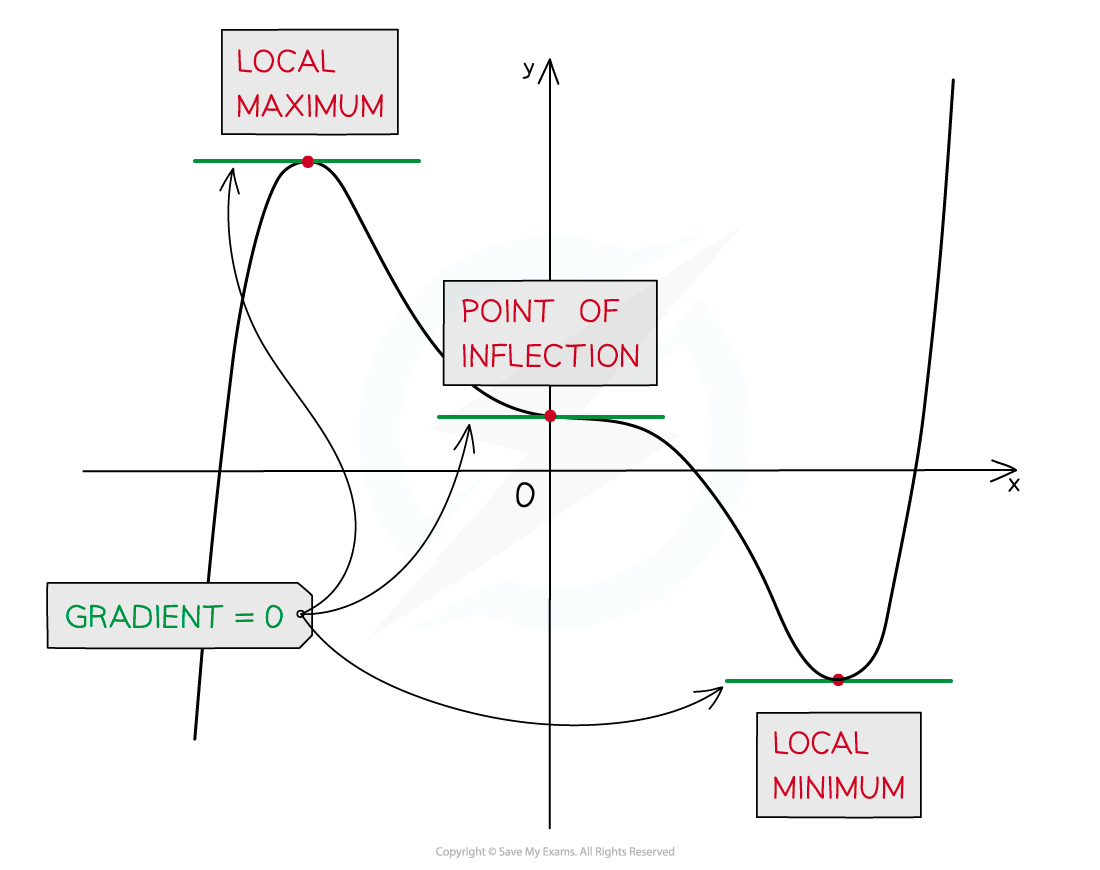
How do I determine the type of stationary point on a quadratic?
The graph of a quadratic function (ie a parabola) only has a single stationary point
For an 'up' parabola this is the minimum; for a 'down' parabola it is the maximum (no need to talk about 'local' here)
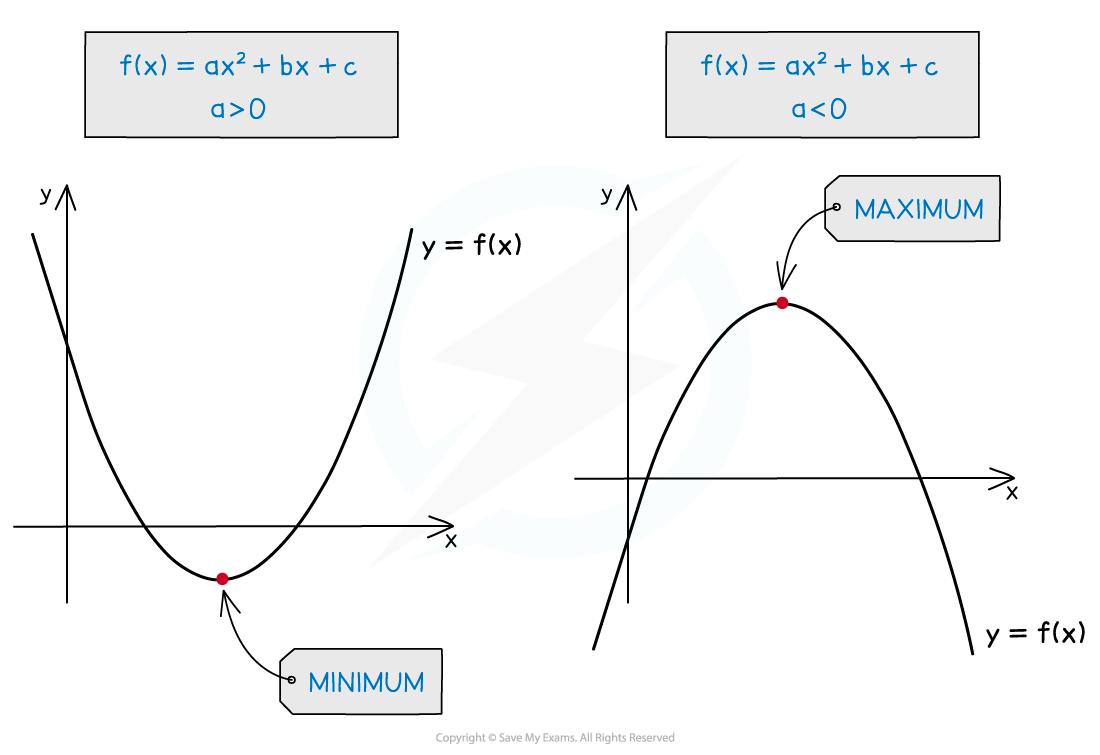
The y value of the stationary point is thus the minimum or maximum value of the quadratic function
Quadratics can only have minimum and maximum points
so quadratics have turning points (also called a vertex)
How do I determine the type of stationary point on a curve?
For a function f(x) there are two ways to determine the nature of its stationary points
Method A: Compare the signs of the first derivative (positive or negative) a little bit to either side of the stationary point
(After completing Steps 1 - 3 above to find the stationary points)
Step 4: For each stationary point find the values of the first derivative a little bit 'to the left' (ie slightly smaller x value) and a little bit 'to the right' (slightly larger x value) of the stationary point
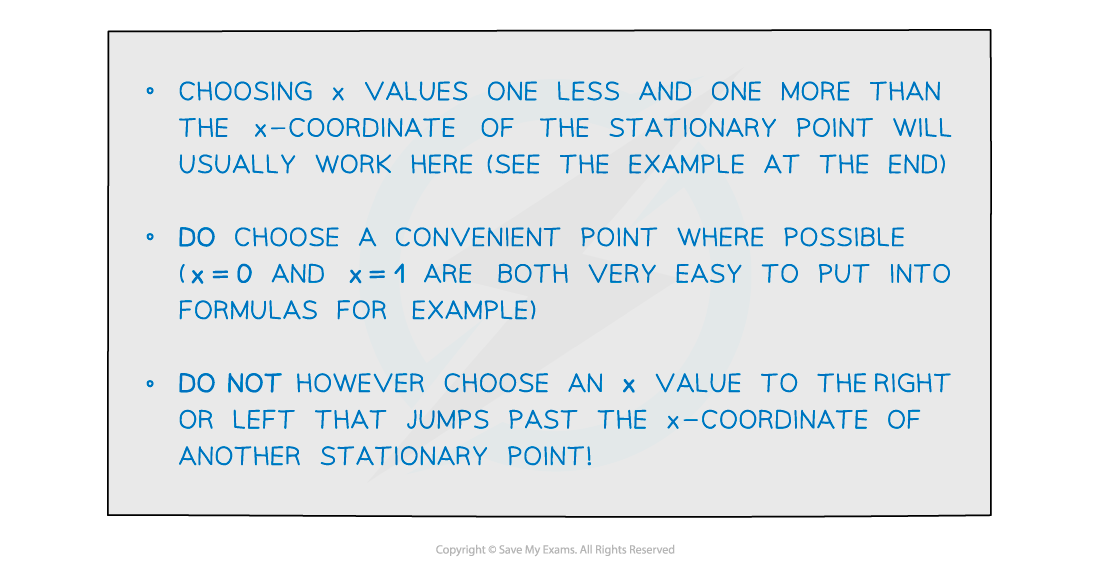
Step 5: Compare the signs (positive or negative) of the derivatives on the left and right of the stationary point
If the derivatives are negative on the left and positive on the right, the point is a local minimum
If the derivatives are positive on the left and negative on the right, the point is a local maximum
If the signs of the derivatives are the same on both sides (both positive or both negative) then the point is a point of inflection
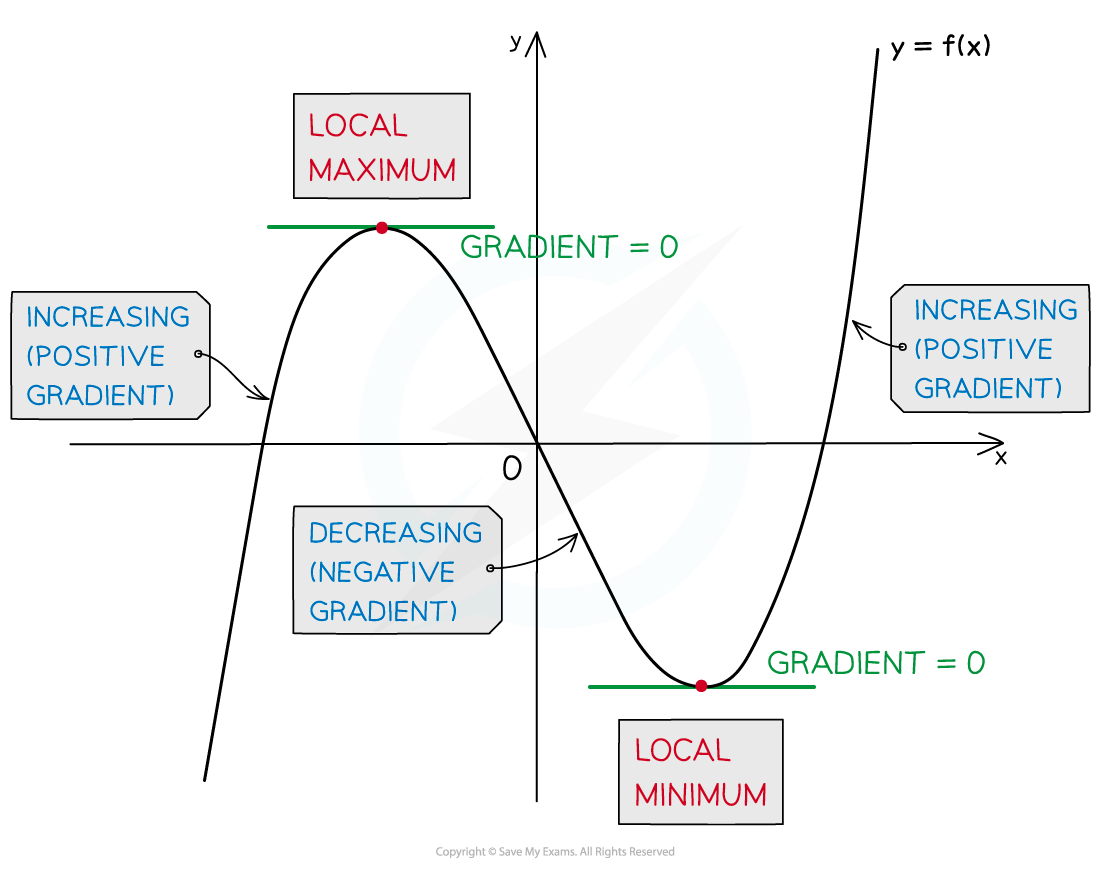
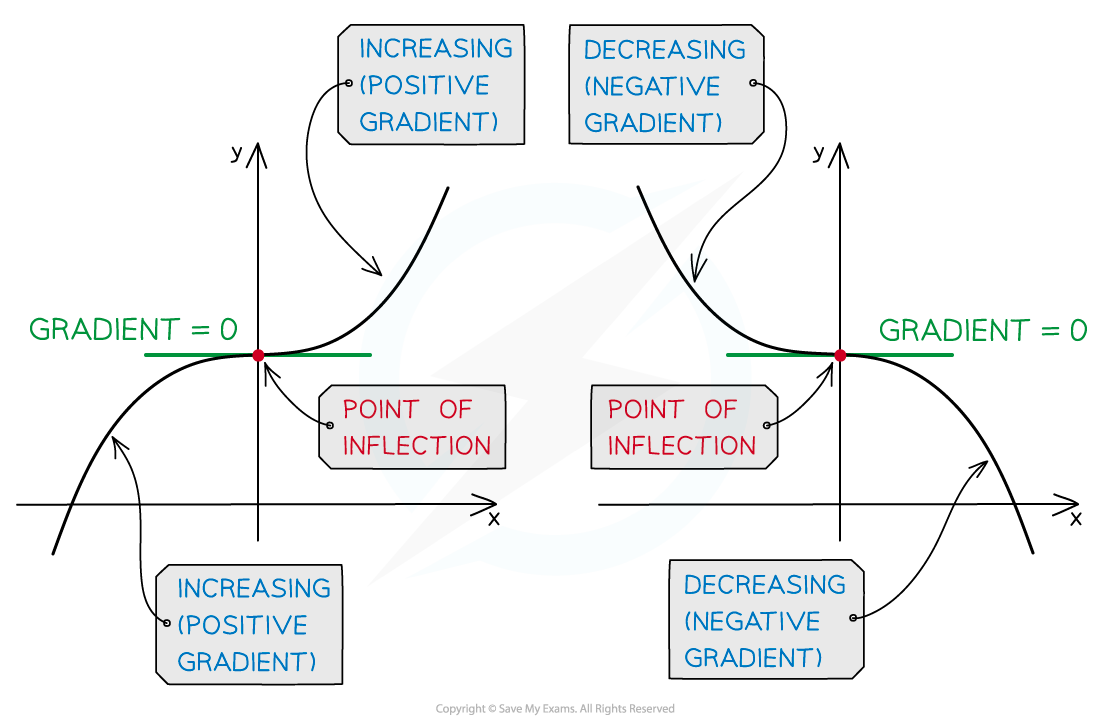
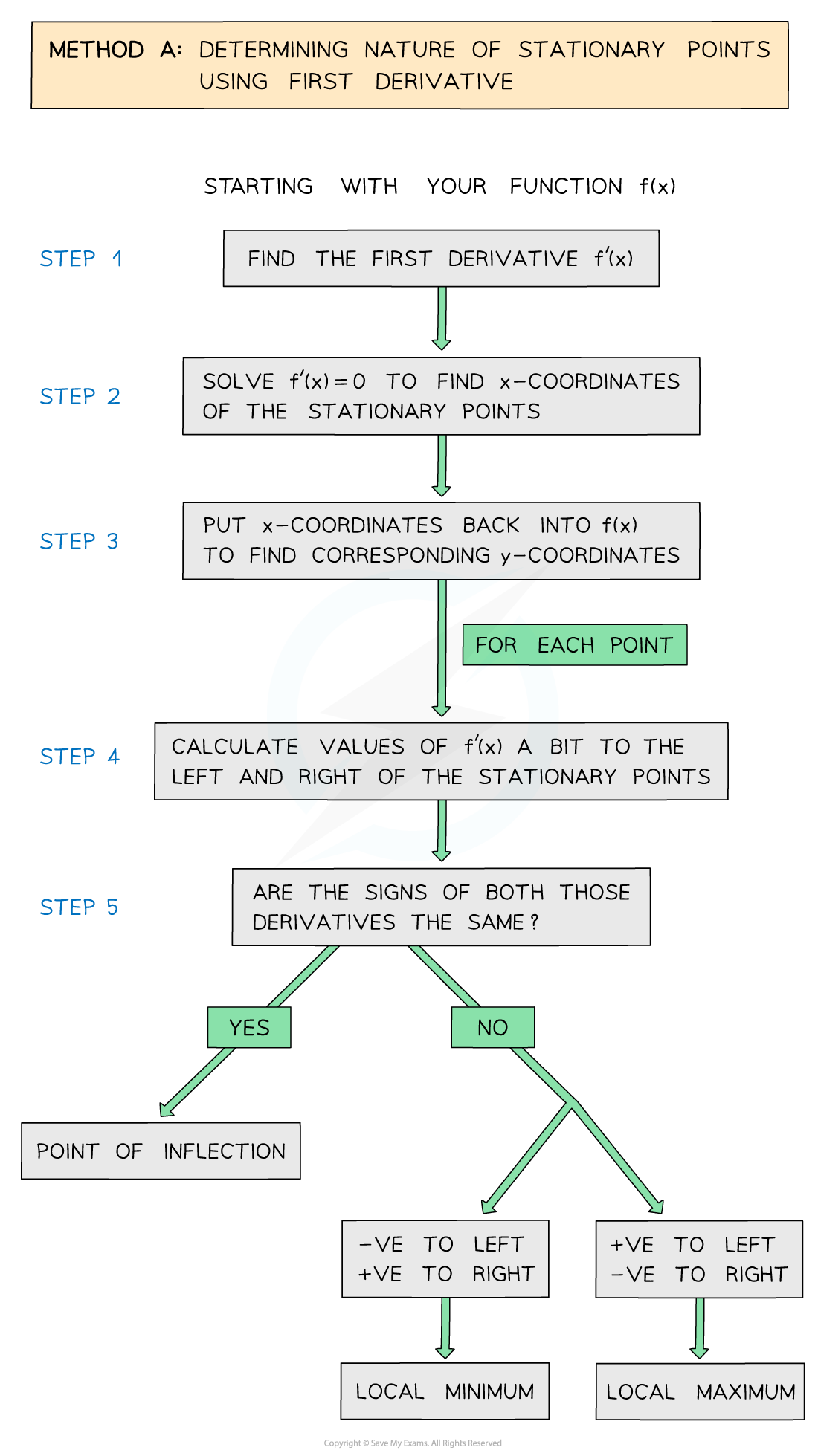
Method B: Look at the sign of the second derivative (positive or negative) at the stationary point
(After completing Steps 1 - 3 above to find the stationary points)
Step 4: Find the second derivative f''(x)
Step 5: For each stationary point find the value of f''(x) at the stationary point (ie substitute the x-coordinate of the stationary point into f''(x) )
If f''(x) is positive then the point is a local minimum
If f''(x) is negative then the point is a local maximum
If f''(x) is zero then the point could be a local minimum, a local maximum OR a point of inflection (use Method A to determine which)
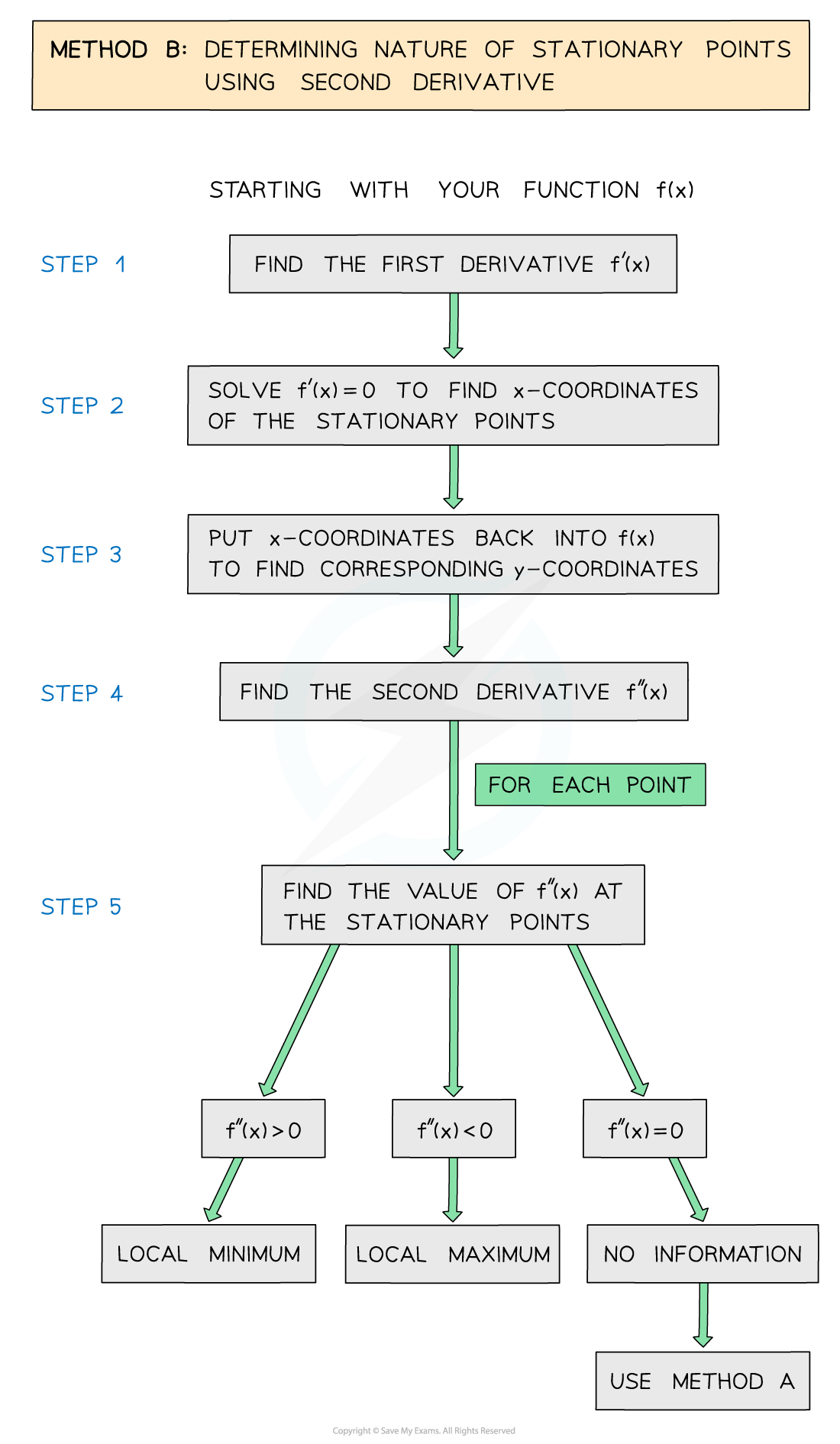
Examiner Tips and Tricks
Usually using the second derivative (Method B above) is a much quicker way of determining the nature of a stationary point.
However, if the second derivative is zero it tells you nothing about the point.
In that case you will have to use Method A (which always works – see the Worked Example).
Worked Example

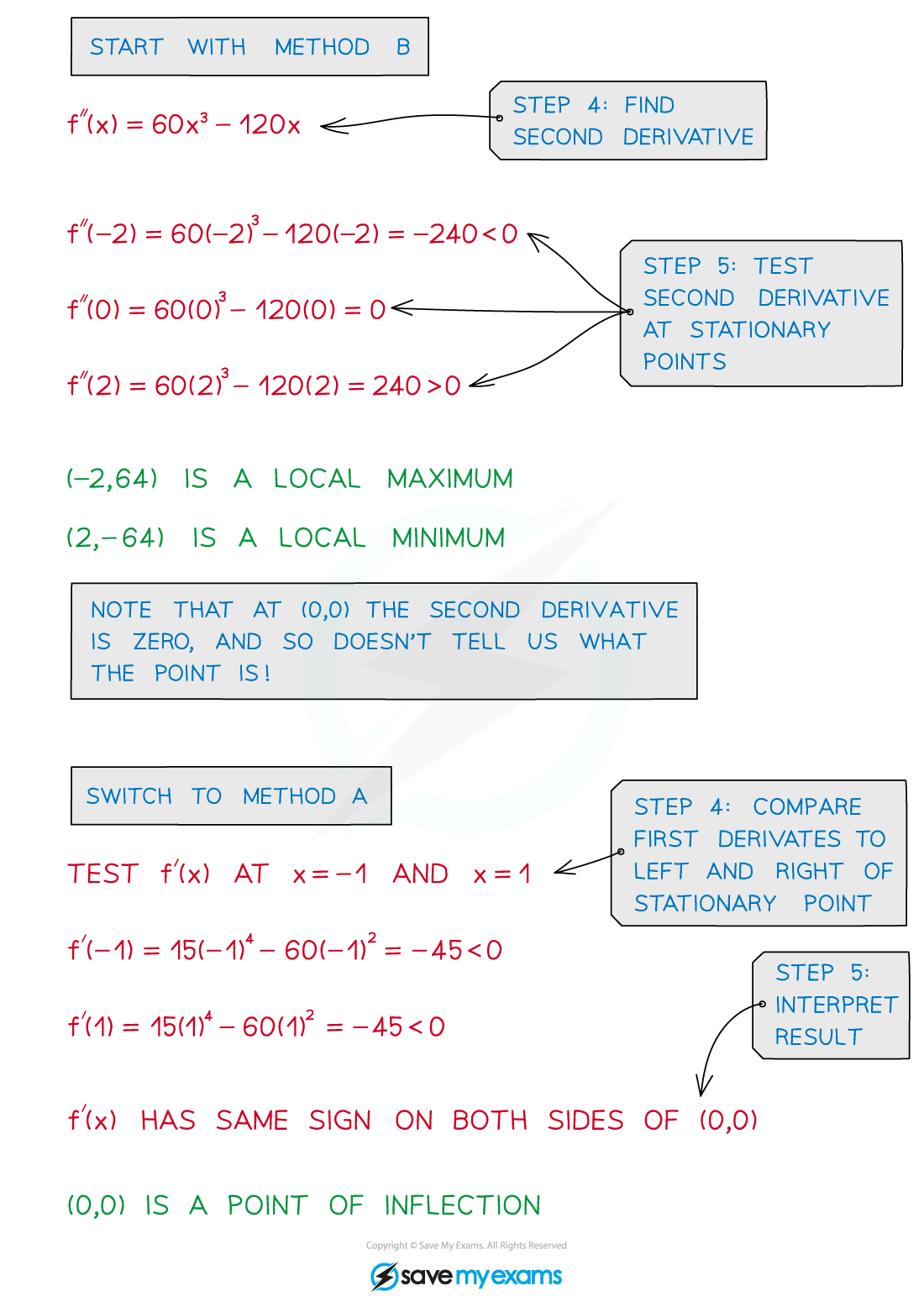
Ready to test your students on this topic?
- Create exam-aligned tests in minutes
- Differentiate easily with tiered difficulty
- Trusted for all assessment types
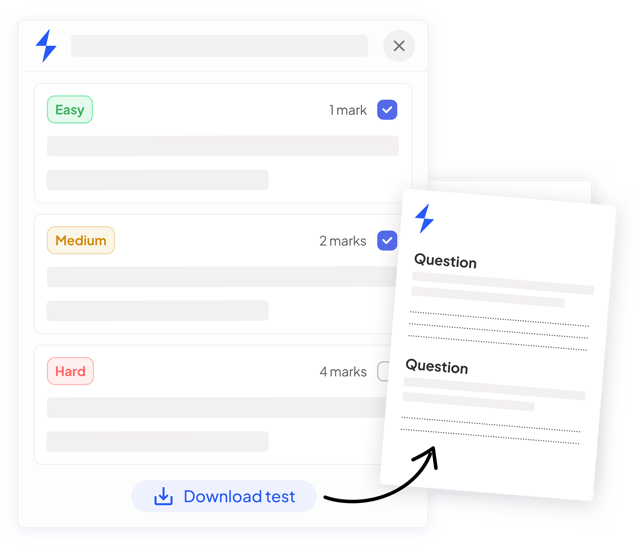
Did this page help you?